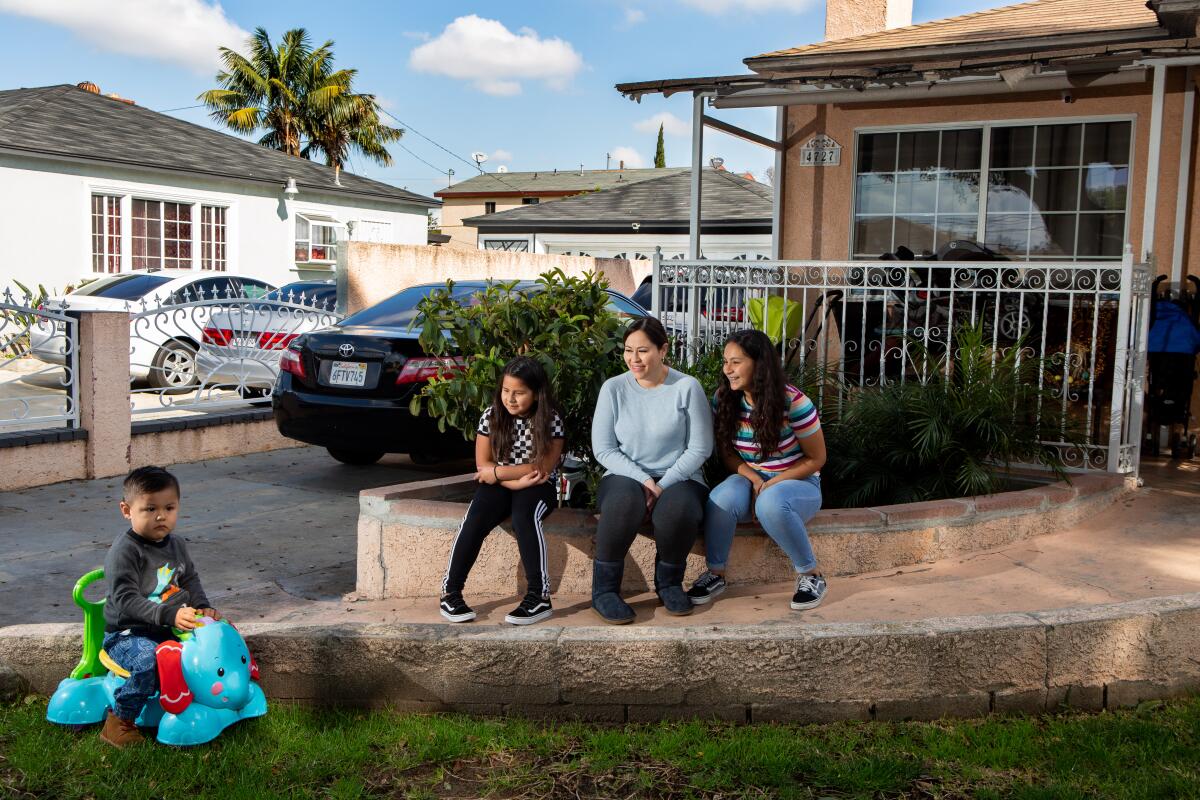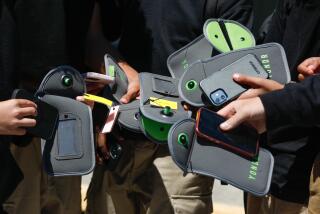With all the distractions at home, low-income students need headphones to study

- Share via
In her family’s one-bedroom home every day unfolds with one distraction after another for 17-year-old Anais Hernandez: her mother cooking and cleaning in the kitchen; her disabled father watching high-volume TV news; the bustle of her younger sister in their East Los Angeles home.
There’s no escape from the noise as Anais attempts to focus on Advanced Placement Spanish literature and English and economics. Two weeks into shelter-at-home schooling, this Mendez High School senior could use a tool that would be hard for her family to afford — sound-canceling headphones.
Before March 13, when Los Angles school district officials shuttered campuses and began a difficult transition to online learning, Anais spent a lot of time at Mendez High, where she got most of her homework done.
“I find it challenging to do my best on my assignments because there’s a lot of distractions,” said Anais, adding wistfully that “any set of headphones — that would help me concentrate and study.”
Anais has earbuds that came with her iPhone 7, but they aren’t designed to screen out sound.
The unanticipated problem of noise and distraction came to the attention of caseworkers from the local nonprofit Communities in Schools, which helps about 1,000 students and their families in 11 Los Angeles Unified schools in high-poverty neighborhoods.
“The team started sharing very similar stories about how families are surviving,” said Elmer Roldan, the group’s executive director. Families suddenly have been crowded all day long into relatively small spaces — sometimes large families or multiple families.
Having a quiet place for schoolwork “is a luxury that not many students have.”
Students typically have worked around their overly busy households by “staying at school late, going to the library, or working from coffee shops — all places where the internet was readily available, Roldan said. But these options disappeared when the city ordered the closing of “nonessential” businesses and banned all “dining in.”
A few students brought up headphones outright, Roldan said, but case workers also concluded that families often did not want to seem greedy or selfish and were simply not going to bring it up: “Asking for headphones feels to them like they are pushing it.”
Communities in Schools is working with other groups, under the name One Family LA, to raise money for obvious needs such as toilet paper, food, rent, medical care and supplies, childcare and transportation costs to and from work.
But the group also has contacted headphone makers for help and discussions are in progress.
Separately, the L.A. Unified School District, at lausd.net, has a broad-based fundraising effort focused substantially on food and technology for students and their families.
“Our most vulnerable families and populations are going to be the hardest hit financially and academically,” said Ana Ponce, executive director of the local group Great Public Schools Now, which is helping spearhead the One Family L.A. effort. “We’re going to encounter things that we didn’t think of. Headphones are a practical need that was not necessarily identified.”
The value of screening out distractions has emerged in households across the region.
In the nearby community of Bell, Keyla, 12, and Valeria, 8, are up against an active toddler. In their small frontyard, 2-year-old Carlos moves, like a sturdy, joyous missile, in rapid succession from blue elephant mini-car to tot-trampoline to skateboard to flinging a small knobbly ball and then a rainbow beachball.
When confined inside the family’s 958-square-foot house, Carlos ranges from boisterous to simply loud, as Norma Quijas tries to oversee her older children’s schoolwork.
“The baby jumps in and wants to help,” said Quijas, who normally works as a house cleaner. “And the girls get distracted; then the baby starts screaming.”
Not far away, Bell High School student Isabelle Torres also finds herself academically marooned. She was worried about working at home even before encountering the distractions it presented.
“I am that teenager that hates the use of computers to an extent anyway, and I feel like a lot of my classes rely on discussions — it’s the only way you really learn,” she said. “I struggle in pre-calculus even with a teacher in front of me.”
Now, working at home, “I can be incredibly distracted,” she said. “I live alongside four other people and while it doesn’t seem so bad, there is never a moment of quiet. ... The last week has been extremely hard and I have yet to find myself adapting to this new way of life.”
More to Read
Sign up for Essential California
The most important California stories and recommendations in your inbox every morning.
You may occasionally receive promotional content from the Los Angeles Times.












